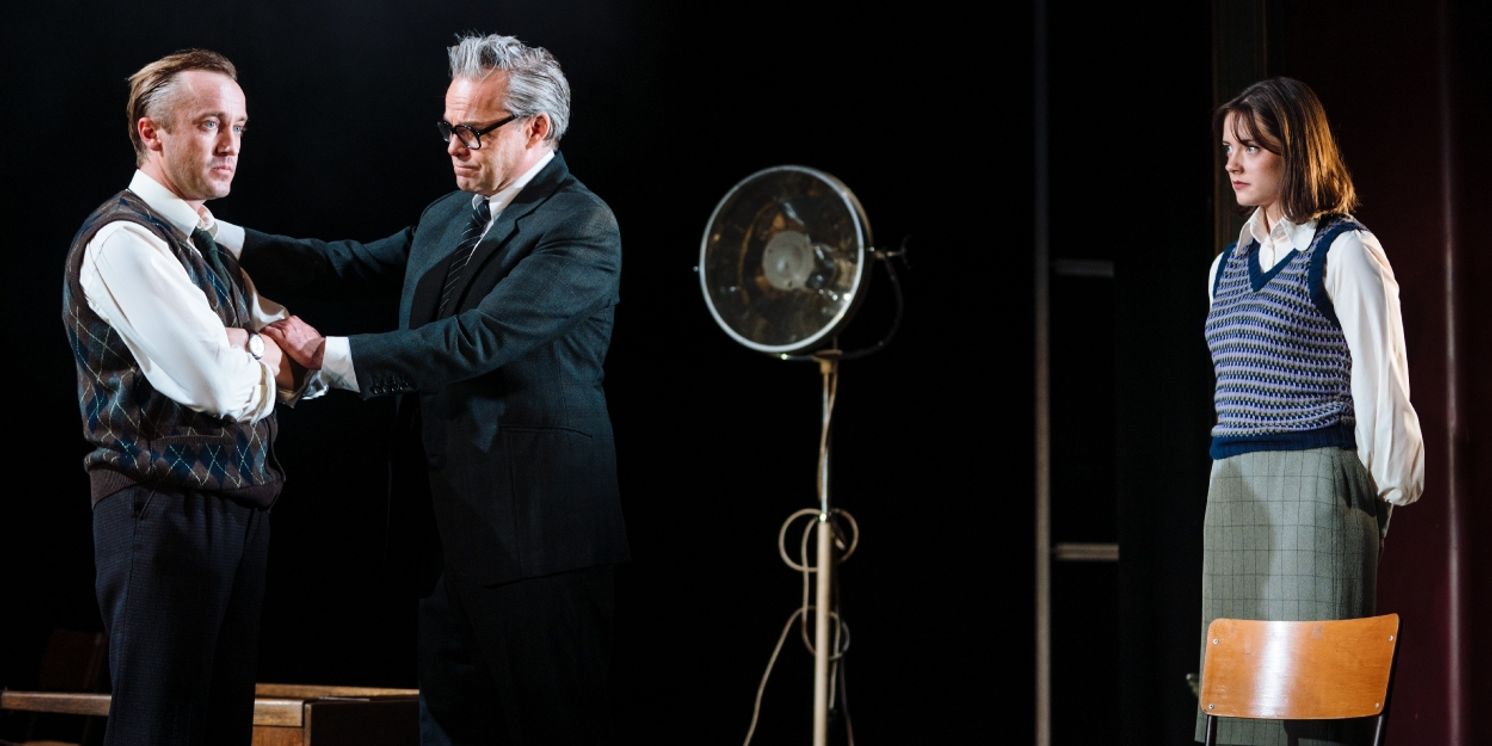Review: A CHILD OF SCIENCE, Bristol Old Vic
A vivid portrayal of the intersection between scientific pursuit and human longing

![]()
“You will meet fire with this” is the prophetic warning to Dr. Robert Edwards as he embarks on his quest to create life outside of the womb in this visceral telling of the creation of IVF.
Spanning approximately 20 years, A Child of Science takes us from observing mice eggs in the lab to the birth of the first IVF baby. Along the way, we encounter sermons from the Pope about "baby factories" and dodgy journalists paying off nurses for stories about the first ‘test tube baby’.
If this sounds like a lot to pack in, it’s because it is. This is science at a frenetic pace, developments happening at lightspeed, cutting out what must have been years of painstaking trial and error. The result is a mind-boggling array of characters that come and go faster than the sliding screens that make up the bulk of Anna Fleischle’s design.
%2C%20Meg%20Bellamy%20(Jean%20Purdy)-%20A%20Child%20of%20Science_Bristol%20Old%20Vic_Helen%20Murray_90.jpg?format=auto&width=1400)
Consistent throughout, though, is Patrick Steptoe (a kindly reassuring Jamie Glover), who fights against the contemporary expectations of gynecology by being compassionate about women’s health and understanding its intersection with societal expectations. As a pioneer of laparoscopic surgery, he crosses paths with Dr. Robert Edwards (Tom Felton of Harry Potter fame) in a scarcely believable “Do you want to change the world?” moment.
Even if some scenes are heavy on exposition, you can forgive Gareth Farr’s writing for wanting to keep us focused on the matter at hand. Juxtaposed with the science is the real heart of the show – the ordinary people. The ones who desperately want a child. The hope, the crushing disappointment, and the joy are all here. It’s Adelle Leonce’s well-measured Margaret that really pushes A Child of Science to be more than the sum of its parts.
%20-%20A%20Child%20of%20Science_Bristol%20Old%20Vic_Helen%20Murray_146.jpg?format=auto&width=1400)
The Bristol Old Vic is proving itself adept at picking pioneering medical stories. After 2022’s Dr. Semmelweis, this almost feels like the next installment, particularly in telling the story of the women so frequently sidelined by history. To that end, Meg Bellamy (recently seen as Kate Middleton in The Crown) is a can’t-take-your-eyes-off presence as the formidably sharp Jean Purdy – an embryologist key to the success of the whole endeavor. She marks her stage debut as one to watch.
The story is so dense with ideas that if the pace does have a downside, it’s that it distances us from getting to know the characters. To pack everything in, Farr has necessarily had to use some broad brush strokes at times. You do sometimes wish you had more time to dwell. Director Matthew Dunster balances the short, almost vignette scenes deftly, though it feels no surprise that the longest scene packs the biggest dramatic punch when Farr and Dunster let the characters have space.
Fleischle’s design doesn’t always help matters. It certainly adds fluidity, but the near-constant shifting of screens, chairs, and other incidentals frequently distracts rather than enhances the story.
Yet, this remains a show clearly saturated with love. Farr and Dunster note their personal connections to the source material in their programme notes, and that is in evidence throughout.
Ultimately, A Child of Science offers a vivid portrayal of the intersection between scientific pursuit and human longing. It’s a testament to the extraordinary efforts behind ordinary miracles. And how the path to creating life can be as intricate and moving as the lives it aims to bring into the world.
A Child of Science is at Bristol old Vic until 6 July
Photo credit: Helen Murray
Reader Reviews
Videos

